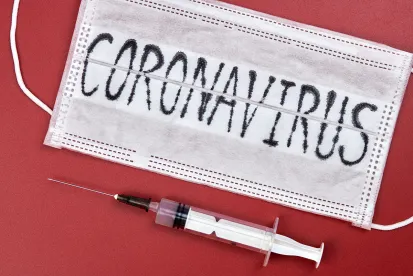The 2019 novel coronavirus continues to evolve and has been officially named COVID-19 by the World Health Organization replacing the previous 2019-nCoV designation. There are now over 46,000 confirmed cases across the globe, with the vast majority in mainland China, and 15 confirmed cases in the U.S. Many details about the virus are unknown including its severity and how it spreads leaving employers with many questions about how to appropriately respond. New guidance is available for employers from the Centers for Disease Control and Prevention (CDC), the Occupational Safety and Health Administration (OSHA), and California’s Division of Occupational Safety and Health (CAL OSHA).
CDC Guidance for Non-Healthcare Employers
On February 7, 2020, the CDC published Interim Guidance for Businesses and Employers to Plan and Respond to 2019 Novel Coronavirus (2019-nCoV) providing important information for non-healthcare employers to help prevent workplace exposures to COVID-19.
The CDC provides detailed steps for employers to take now. The CDC’s recommendations fall under six main areas:
1. Actively encourage sick employees to stay home. Employees with symptoms of acute respiratory illness should stay home and not come to work until they are fever-free and free from symptoms for at least 24 hours. The CDC encourages employers not to require employees who have an acute respiratory illness to present a doctor’s note to validate their illness or to return to work because the medical facilities may be overwhelmed. Although not legally required, we recommend that employers carefully consider whether this approach is appropriate in their workplaces.
2. Separate sick employees. Employees who appear to have acute respiratory illness symptoms (i.e., cough, shortness of breath) should be separated from other employees and sent home immediately.
3. Emphasize staying home when sick, respiratory etiquette and hand hygiene by all employees. The CDC provides links to posters that encourage employees to stay home when sick, cough and sneeze etiquette and hand hygiene and recommends that employers put posters at the entrance to the workplace and in other work areas. The CDC also encourages employers to provide tissues, no-touch receptacles, hand sanitizer and instructions on handwashing and use of hand sanitizer.
4. Perform routine environmental cleaning. The CDC recommends routine cleaning of all frequently touched surfaces and that employers provide disposable wipes so that commonly used surfaces such as doorknobs can be wiped down by employees before each use. The CDC does not recommend any particular cleaning product or additional disinfection beyond routine cleaning at this time.
5. Advise employees to take certain steps before traveling. Everyone should check the CDC’s Traveler’s Health Notices for each country before traveling and not travel if they have symptoms of acute respiratory illness. Employers should also make sure that employees know what to do and who to contact if they become sick while traveling.
6. Additional Measures. The CDC recommends that employees who have a sick family member at home with COVID-19 “should notify their supervisor and refer to CDC guidance for how to conduct a risk assessment of their potential exposure.”
CDC’s Risk Assessment for Exposure in Travel or Community Settings
The CDC has published an extensive guidance for conducting a risk assessment and associated recommendations in its Interim US Guidance for Risk Assessment and Public Health Management of Persons with Potential 2019 Novel Coronavirus (2019-nCoV) Exposure in Travel-associated or Community Settings. Employers who are concerned that an employee(s) may have been exposed to the virus should consult the CDC’s risk assessment. This guidance addresses various potential exposure scenarios and identifies four exposure risk categories: (1) High Risk, (2) Medium Risk, (3) Low Risk; and (4) No Identifiable Risk. Based on these exposure risk categories, the CDC provides recommendations for exposure risk management including appropriate restrictions on public activities (including workplaces), medical evaluation and travel restrictions all depending on whether the individual has symptoms of COVID-19. The CDC has provided separate guidance for healthcare settings.
Employees who live in the same household as someone with confirmed COVID-19, for example, may fall under either “High Risk” or “Medium Risk” depending on the circumstances. Individuals who are “High Risk” but have no symptoms should be quarantined (voluntary or under public health orders) for 14 days. For employees who fall under the “Medium Risk” category, as long as they have no symptoms, the CDC generally recommends that they avoid areas where people congregate which includes workplaces for 14 days. However, the CDC says that employers may consider case-by-case and in consultation with public health officials whether these individuals may come to work without entering crowded locations. We caution employers that these are complex decisions that must be considered carefully in the context of the workplace and multiple layers of legal and other considerations.
If an employee is confirmed to have the COVID-19 infection, the CDC recommends that employers inform co-workers of potential exposure. Knowledge about potential exposure is certainly important, but we counsel employers to consider legal issues including confidentiality requirements under the Americans with Disabilities Act and state law.
Up until now, most employers have been appropriately focused on limiting potential exposure from individuals who had recently traveled to Hubei or other areas in mainland China. If this outbreak continues to grow either across the U.S. or in certain geographic areas, employers will be forced to manage the risk of employees potentially bringing the virus to work as a result of exposures at home or otherwise in their own communities. We recommend that employers develop strategies now that are appropriate for their workplaces including communications to employees.
Planning for Possible Outbreak in the U.S.
In its Guidance for Businesses and Employers, the CDC also recommends that all employers plan for a potential outbreak of COVID-19 in the US and be prepared to implement strategies to protect their workforce while ensuring continuity of operations. Planning for a potential outbreak includes identifying and communicating objectives such as “(a) reducing transmission among staff, (b) protecting people who are at higher risk for adverse health complications, (c) maintaining business operations, and (d) minimizing adverse effects on other entities in their supply chains.” Among other things, the CDC recommends that employers consider now, whether when faced with an outbreak of the illness, they could have employees telecommute, or stagger shifts to create physical distance among employees and whether they have the infrastructure to support those efforts. The CDC also recommends that employers consider plans to minimize exposure between employees and the public if public officials call for social distancing and prepare for increased absenteeism.
All employers should review the CDC’s complete Guidance for Businesses and Employers. The CDC’s guidance is not a legal mandate for employers. OSHA and many state laws, however, impose a general duty on all employers to provide workers with work environments free from recognized hazards. There are also federal and state mandatory requirements that apply, particularly in higher risk industries, to prevent occupational exposure to COVID-19.
OSHA Provides Guidance for All Employers and Specific Guidance for Certain Industries
Last week, OSHA published detailed information on hazard recognition, medical information, potentially applicable OSHA standards, control and prevention, as well as additional resources and information about workers’ rights. As OSHA explains, without sustained human-to-human transmission, most U.S. workers remain at low risk of exposure and infection. However, OSHA identifies important but common sense practices for all workers and employers to help prevent worker exposure to COVID-19: proper handwashing including the use of alcohol-based rub (hand sanitizer), avoid touching eyes, nose, or mouth with unwashed hands and avoid close contact with sick people.
Certain groups of workers, especially those in healthcare, are at a higher risk for potential exposure and employers and workers must take additional precautions. OSHA provides additional guidance for groups of workers with increased risk of exposure including:
Healthcare
Deathcare (including coroners, medical examiners, and funeral directors)
Laboratories
Airline operations
Waste management
Business Travelers
The CDC has also published guidance for healthcare professionals and laboratories.
Employers with Workers in California Should Review New Cal/OSHA Guidelines
CAL OSHA also issued guidance on requirements to protect health care workers from COVID-19. The guidance covers the safety requirements when providing care for suspected or confirmed patients of the respiratory disease or when handling pathogens in laboratory settings. COVID-19 is an airborne infectious disease covered by CAL OSHA’s Aerosol Transmissible Diseases (ATD) standard, which requires employers to protect workers from diseases and pathogens transmitted by aerosols and droplets. The ATD standard applies in health care facilities, laboratories, public health services, police services, and other locations where employees are reasonably anticipated to be exposed to confirmed or suspected cases of aerosol transmissible diseases. The ATD standard requires employers to have an ATD Exposure Control Plan that includes procedures to identify COVID-19 cases, provision of appropriate personal protective equipment, among other things. Employers must also provide training for their employees covering many items related to COVID-19 such as the signs and symptoms, modes of transmission, methods to prevent exposure, and personal protective equipment to name just a few.
Advice for All Employers as We Move Forward
Employers should continue to monitor information coming from state and local health departments and promptly report any suspected cases of COVID-19 to the local health department. Healthcare employers should consult guidance from OSHA, the CDC and other agencies relevant to healthcare providers. Given that this is a rapidly evolving situation, all information in this update is subject to change. For the latest information, please review the relevant agency communications.
To better support clients as they respond to this challenging public health issue, Jackson Lewis has established a dedicated “Coronavirus” team that is continually assessing risks, preparing employee communications, and providing practical advice on the workplace compliance issues flowing from coronavirus workplace concerns and the travel restrictions and new facts we are continuing to learn about COVID-19






 />i
/>i

